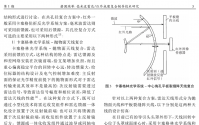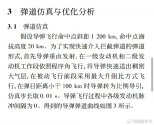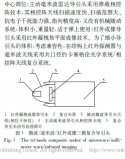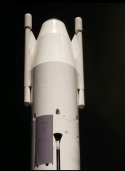Such as? Frankly estimates are the bad idea unless confined from official documents. Like j-20 costs are known from releases.True. But that is just one methodology.
There are 2 others which would come to around $2 Million as well.
You are using an out of date browser. It may not display this or other websites correctly.
You should upgrade or use an alternative browser.
You should upgrade or use an alternative browser.
PLA Anti-Air Missile (SAM) systems
- Thread starter FORBIN
- Start date
Such as? Frankly estimates are the bad idea unless confined from official documents. Like j-20 costs are known from releases.
I outlined these before
1. Big Shrimp podcast comment - $2 Mn cost
2. Extrapolate from USAF comments
3. Extrapolate from SCUD-type ballistic missile costs.
---
NB. We'll likely never get an official press release on the cost of a DF-17
And my guess is that the J-20 cost has declined to $70-80 Mn these days, compared to $110 Mn when first officially announced.
I'm confident China has a large inventory of solid rocket motors for each use case. For example a lot of people think DF-17 uses DF-15/16 motors with a HGV mounted on top but if you think about the flight characteristics that doesn't quite make sense, so it's a motor that is similar but will have different specific impulse, thrust etc.
A lot of the cost issues with hypersonics procurement lies in the selection of appropriate motors for a particular system. This is the problem that is plaguing the US right now. Mike Griffin, former NASA head and DoD's CTO, warned that having only one major supplier of motors (used to be Aerojet, Thiokol and Hercules, now Northrop Grumman) will mean that the US will be up to a decade late in terms of fielding hypersonic weapons because they can't afford to do the hundreds of live tests that China is doing.
One thing Griffin has been doing is advising companies like Anduril and this new start-up called Castelion to build up the necessary supply chain to mass produce solid motors and hypersonic gliders. Seems like a very tall order
A lot of the cost issues with hypersonics procurement lies in the selection of appropriate motors for a particular system. This is the problem that is plaguing the US right now. Mike Griffin, former NASA head and DoD's CTO, warned that having only one major supplier of motors (used to be Aerojet, Thiokol and Hercules, now Northrop Grumman) will mean that the US will be up to a decade late in terms of fielding hypersonic weapons because they can't afford to do the hundreds of live tests that China is doing.
One thing Griffin has been doing is advising companies like Anduril and this new start-up called Castelion to build up the necessary supply chain to mass produce solid motors and hypersonic gliders. Seems like a very tall order
Sounds like a terrible idea. Working with solid motors is pretty much unsafe. It requires dedicated testing facilities. It is not something you hand out to a startup.
You already had the incident with Spaceship Two which killed several people with a hybrid rocket. And you will likely see the same happen here.
You already had the incident with Spaceship Two which killed several people with a hybrid rocket. And you will likely see the same happen here.
I wonder how that AESA can work with that IIR Seeker ahead of it ?. It will create aperture blockage and contributes to increased amount of sidelobe and therefore reduction of antenna gain and resolution. Also potential EMC (Electromagnetic Compatibility) Issue as the IIR Seeker will be exposed to the radar seeker's emmission, which might disrupt the IIR's electronics.
This is an introduction to the working principle of the common-aperture Cassegrain composite antenna mentioned in the article.I wonder how that AESA can work with that IIR Seeker ahead of it ?. It will create aperture blockage and contributes to increased amount of sidelobe and therefore reduction of antenna gain and resolution. Also potential EMC (Electromagnetic Compatibility) Issue as the IIR Seeker will be exposed to the radar seeker's emmission, which might disrupt the IIR's electronics.
That is to say, the engineering difficulties you mentioned have been considered during the design.
In order to simultaneously improve the detection distance of optics and radar, that is, to simultaneously increase the aperture and the radar antenna aperture under the condition of a certain projectile diameter and eliminate the competition between the two, it is necessary to use the common-aperture composite antenna technology to solve this problem. The common-aperture composite antenna technology adopts the Cassegrain refractive optical system solution. The Cassegrain optical system is used. The infrared signal is reflected by the primary and secondary reflectors and converges at the focal point of the center. Therefore, it is only necessary to open the aperture of the radar antenna to transmit the infrared signal collected by the reflective surface, so that the aperture of the radar and infrared are fully utilized. In other words, not only the aperture is increased, but also the area of the hole in the center of the radar antenna is reduced, which is more conducive to the radar antenna to obtain high gain and low side lobes.
The actual test results are:
Complete radar antenna gain 30.5dB side lobe -18dB
Composite antenna with infrared seeker gain 28.5dB side lobe -16dB
The performance is reduced, but it is sufficient to meet the requirements of use


Last edited:
Research paper on the application of spaced-based information support in ultra-long-range (ULR) air defense operations.
The surface-to-air missile (SAM) mentioned in the article has a stated interception point that is 1200 kilometers slanted distance away from the point of ULRSAM launch, at an altitude of 20 kilometers (~66 thousand feet).
I.e. we are looking at an ULRSAM with interception ranges of more than 1000 kilometers.
Posted by @鎏鎏岁月 on Weibo.



The surface-to-air missile (SAM) mentioned in the article has a stated interception point that is 1200 kilometers slanted distance away from the point of ULRSAM launch, at an altitude of 20 kilometers (~66 thousand feet).
I.e. we are looking at an ULRSAM with interception ranges of more than 1000 kilometers.
Posted by @鎏鎏岁月 on Weibo.



Well that answers the guidance question lolResearch paper on the application of spaced-based information support in ultra-long-range (ULR) air defense operations.
The surface-to-air missile (SAM) mentioned in the article has a stated interception point that is 1200 kilometers slanted distance away from the point of ULRSAM launch, at an altitude of 20 kilometers (~66 thousand feet).
I.e. we are looking at an ULRSAM with interception ranges of more than 1000 kilometers.
Posted by @鎏鎏岁月 on Weibo.
View attachment 131675
View attachment 131676
View attachment 131677


